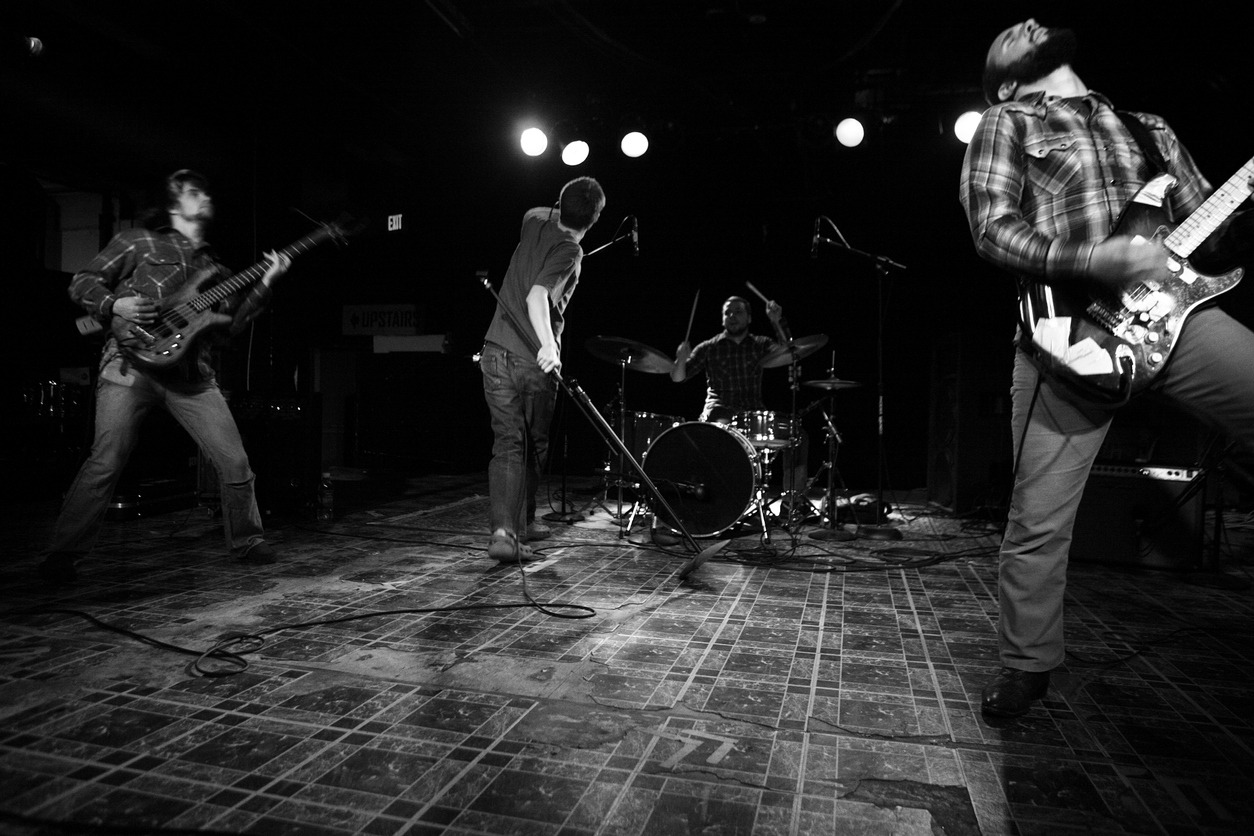Rock ‘n roll, a genre that revolutionized the music scene and captured the spirit of a generation, remains an enduring symbol of youthful rebellion and cultural change. But amidst its vibrant history and iconic figures, a question lingers: What was the first rock ‘n roll song?
This debate, as complex as the genre’s own rhythm, has intrigued music enthusiasts and historians alike. In this article, we delve into the origins of rock ‘n roll, examining the songs that might claim the title of “the first” and exploring the fusion of musical styles and cultural forces that gave birth to this revolutionary genre. Join us on a journey back to the 1950s as we uncover the roots of rock ‘n roll and celebrate the tracks that set the stage for a musical revolution.
Historical Context
The Melting Pot of Musical Genres
Rock ‘n roll didn’t emerge in a vacuum. It was the product of a rich tapestry of musical traditions, blending elements of blues, jazz, country, gospel, and rhythm & blues (R&B). This amalgamation created a sound that was both familiar and radically new. The blues provided soulful depth and emotional expression, jazz contributed improvisation and complex rhythms, country brought storytelling and twang, while R&B added a driving beat and vibrant energy. This fusion of styles reflected the diverse cultural landscape of post-war America, where different communities and their musical traditions began to intermingle more freely.
Social and Cultural Influences
The post-World War II era was a time of significant social and economic change. The rise of the teenager as a distinct social group with their own spending power and cultural preferences played a crucial role in the development of rock ‘n roll. These young people were looking for a form of expression that was distinct from that of their parents, and rock ‘n roll fit the bill perfectly. It was rebellious and energetic and spoke to their desires for freedom and identity.
Technological Advances
Technological advancements also played a pivotal role in the birth of rock ‘n roll. The invention of the electric guitar, improvements in amplification, and the advent of the 45 rpm record transformed the musical landscape. These innovations made music more accessible to the masses and allowed the distinctive sound of rock ‘n roll to flourish. The electric guitar, in particular, became the iconic instrument of the genre, capable of producing a range of sounds from sweet melodies to raucous, distorted riffs.
The Rise of Independent Record Labels
The 1950s saw the emergence of independent record labels, which were more willing to take risks on new sounds and artists than their more established counterparts. These labels played a crucial role in the early days of rock ‘n roll, providing a platform for emerging artists to record their songs and reach a wider audience. Sun Records, Chess Records, and Atlantic Records were among the key players in discovering and promoting artists who would become legends of the genre.
Contenders for the First Rock ‘n Roll Song
Tracing the roots of rock ‘n roll music has posed significant challenges for researchers. Rock and roll stands out as a vibrant genre within the music world. Icons such as “The Beatles,” “Elvis Presley,” “Buddy Holly,” “Bob Dylan,” and “Pete Townshend” have all contributed to the rich legacy of rock and roll, yet none of them performed the inaugural rock ‘n roll track. This raises the intriguing question: who actually recorded the very first rock and roll song?
The debate over the first rock ‘n roll song is as lively and dynamic as the genre itself, with several tracks laying claim to the title. Each contender brings something unique to the table, illustrating the diverse influences that shaped rock ‘n roll.
“Rocket 88” by Jackie Brenston and His Delta Cats (1951)
Often hailed as a strong contender, “Rocket 88” features many elements that would define rock ‘n roll: a strong backbeat, distorted electric guitar, and lyrics celebrating cars and freedom. Recorded at the famed Sun Studio in Memphis, the song’s energy and sound quality were influenced by a damaged amplifier, which gave the guitar a distinctive fuzzy sound. This serendipitous twist is cited by many as the birth of the electric guitar’s central role in rock music.
There’s also a second version of Rocker 88 which was recorded by Bill Halley’s group on June 24, 1951. Their group was named “Bill Halley and the Saddlemen,” and later changed to the Comets. Not only did Turner’s rendition become popular, but Haley’s version of “Rocket 88” also achieved regional success. Haley’s recording went on to influence the music scene throughout 1954.
“That’s All Right” by Elvis Presley (1954)
Elvis Presley’s first commercial recording, “That’s All Right,” is another significant milestone in the rock ‘n roll saga. A cover of Arthur Crudup’s blues number, Elvis’s version blended country with R&B, creating a sound that appealed to a wide audience and helped break down racial barriers in music. The song’s success on regional radio stations and its electrifying performance style marked Elvis as a pivotal figure in the rock ‘n roll movement.
“Rock Around the Clock” by Bill Haley & His Comets (1954)
Bill Haley’s “Rock Around the Clock” became a rock ‘n roll anthem after its inclusion in the 1955 film “Blackboard Jungle.” Although not initially a hit, the song’s exposure in the movie ignited its popularity, making it one of the best-selling singles of all time. Its straightforward, catchy melody and driving rhythm pattern became a template for future rock songs, cementing its place in history.
Other Notable Mentions
- “Boogie Chillen” by John Lee Hooker (1948): With its rhythmic boogie pattern and electrified sound, this song is considered a precursor to rock ‘n roll, blending Delta blues with a more upbeat tempo.
- “Good Rocking Tonight” by Roy Brown (1947): This song, covered later by Elvis Presley and Ricky Nelson, is noted for its upbeat tempo and lyrics that hint at the rebellious spirit of rock ‘n roll.
Each of these songs contributes to the narrative of rock ‘n roll’s origins, offering a glimpse into the genre’s eclectic influences. Whether it’s the distorted guitar of “Rocket 88,” the cross-genre appeal of Elvis’s “That’s All Right,” or the widespread popularity of “Rock Around the Clock,” these tracks represent key moments in the evolution of rock ‘n roll. The debate over which song was “first” may never be definitively resolved, but the importance of these early recordings in shaping the sound and spirit of rock ‘n roll is undeniable.
Criteria for Defining the First Rock ‘n Roll Song
Determining the first rock ‘n roll song is not a straightforward task due to the genre’s gradual evolution and blend of musical influences. Several criteria are considered by music historians and enthusiasts when identifying the foundational tracks of rock ‘n roll:
Musical Elements
The sonic characteristics of a song play a crucial role in its classification as rock ‘n roll. Key elements include a strong, steady beat, the use of electric guitars with a focus on rhythm as well as lead parts, a prominent bass line, and energetic vocals. The presence of a backbeat, where the second and fourth beats in a four-beat measure are accented, is also a defining characteristic. Songs that integrate these components in a way that was distinct from earlier musical forms are strong contenders for the title of “first” rock ‘n roll song.
Cultural Impact and Audience Reception
The reaction of the audience and the song’s impact on society at the time of its release are also important factors. Rock ‘n roll was known for its appeal to the youth, often causing excitement and, at times, controversy among older generations. Songs that resonated with teenagers and young adults prompting shifts in social norms, dance styles, and fashion, are considered pivotal. The degree to which a song challenged the status quo or was embraced by a burgeoning youth culture can mark it as a significant milestone in the rock ‘n roll timeline.
Influence on Subsequent Artists and Records
The extent to which a song influenced other musicians and the development of the rock ‘n roll genre is another critical criterion. Tracks that inspired future artists to adopt a similar style or attitude or that led to innovations in music production, instrumentation, or songwriting hold a special place in the genre’s history. A song that spawned a wave of imitators or opened the door for other rock ‘n roll acts can be seen as a forerunner.
Innovation and Originality
Songs that introduced new musical ideas or production techniques or that combined existing elements in novel ways are often highlighted in discussions about the first rock ‘n roll song. Innovation might include the introduction of distortion or feedback in guitar playing, unique vocal stylings, or the fusion of genres in a way that had not been heard before. The originality of the composition, both musically and lyrically, contributes to its candidacy as a pioneering rock ‘n roll track.
The search for the first rock ‘n roll song involves a multidimensional analysis that considers the music’s technical aspects, its effect on listeners and society, and its legacy within the genre. While it may be challenging to pinpoint a single “first” song, examining these criteria helps illuminate the tracks that played key roles in the birth and evolution of rock ‘n roll.
Conclusion
Identifying the definitive first rock ‘n roll song is a complex endeavor, given the genre’s rich tapestry of influences and its evolutionary nature. While songs like “Rocket 88,” “That’s All Right,” and “Rock Around the Clock” each present compelling cases, the true essence of rock ‘n roll lies in its ability to blend diverse musical styles, resonate with the youth, and leave a lasting impact on the cultural landscape. Regardless of which song one might consider the “first,” it’s clear that rock ‘n roll has left an indelible mark on the history of music, shaping the soundtracks of generations and inspiring countless artists to push the boundaries of creativity.



